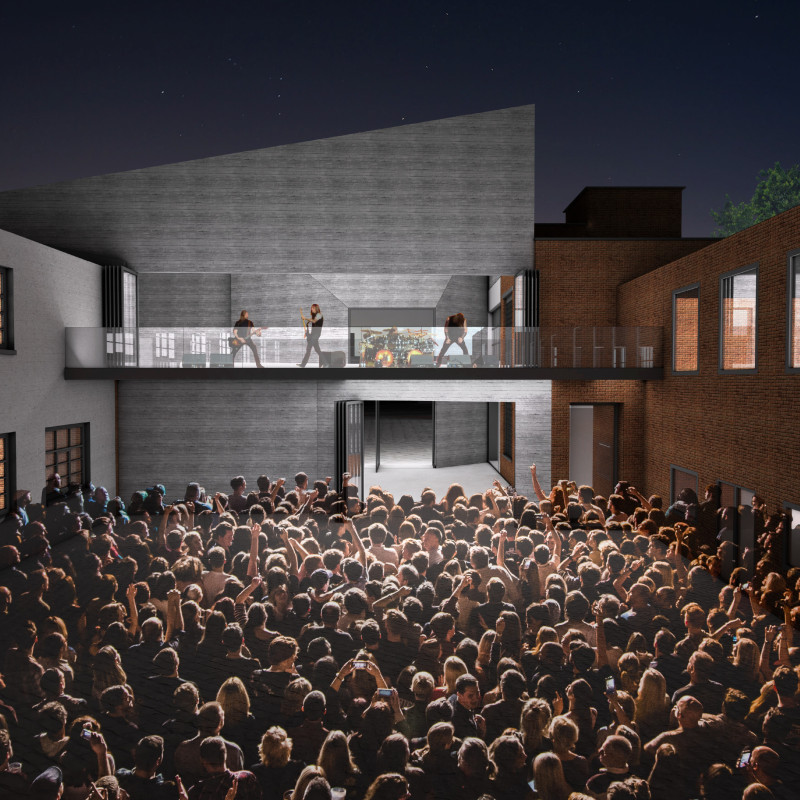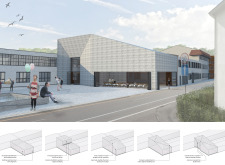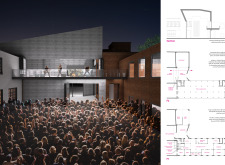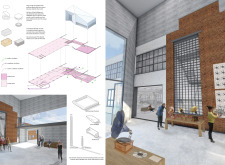5 key facts about this project
**Project Overview**
The Mango Vinyl Hub is located in an urban art district known as "The Corridor," focusing on the adaptive reuse of abandoned industrial buildings to create a dynamic cultural center. This initiative is designed to facilitate community engagement and artistic expression through a multifunctional space that combines cultural and commercial activities. The project aims to enhance pedestrian access and visually engaging public spaces, while respecting the historical significance of the site and incorporating contemporary architectural elements that reflect modern urban life.
**Cultural Regeneration and Functionality**
This design fosters cultural regeneration by revitalizing neglected urban spaces and creating shared experiences centered around music and vinyl record production. It provides adaptable spaces suitable for diverse functions, including art galleries, workshops, and live performances. The hub is intended to evolve over time, responding flexibly to the community's changing needs while encouraging a sense of ownership among local residents.
**Materiality and Spatial Dynamics**
The architectural approach integrates a range of materials to reflect both the site's industrial heritage and its contemporary role. Prominent uses of brick, concrete, glass, and steel create a cohesive aesthetic that emphasizes stability, openness, and a connection to the past. Spatially, the project is structured to support community interaction and movement, with proposed pedestrian bridges facilitating access between the hub and the city center. The initial phases focus on establishing core functions such as documentary spaces and production facilities, with future plans envisioning a fully developed cultural destination enriched by engaging public spaces and event areas.





















































